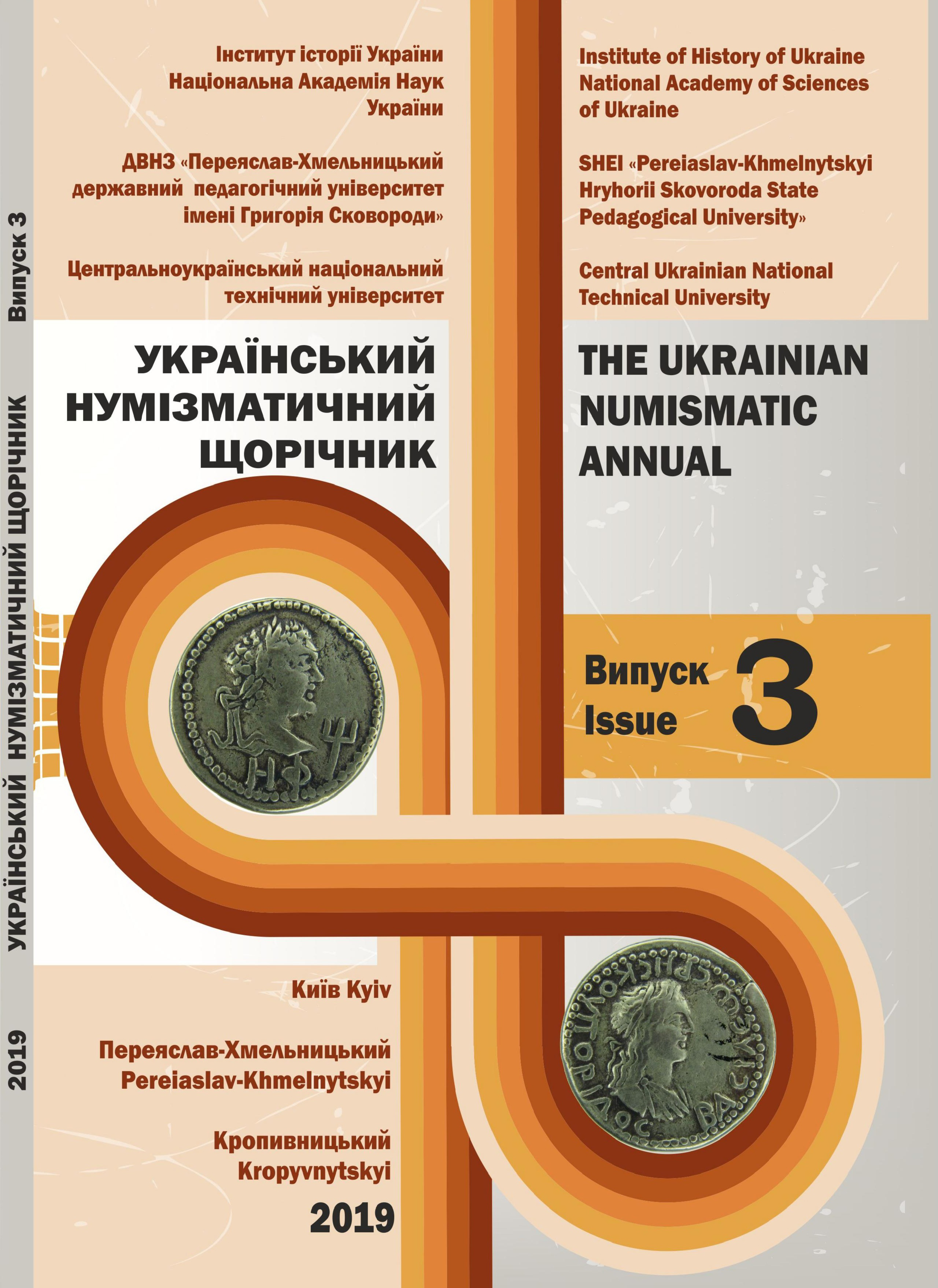Ономастика та просопографія у відновленні монетних монограм (на прикладі
Ольвії IV ст. до н.е.)
Onomastics and prospography in restoration of coin monograms (on the example
of Olbia IV century B.C.)
Author(s): Mykola NikolayevSubject(s): History, Archaeology, Cultural history, Economic history, Ancient World
Published by: ДВНЗ Переяслав-Хмельницький державний педагогічний університет імені Григорія Сковороди
Keywords: Olbia; coins; monograms; abbreviations; onomastic; prosopography; chronology; historical context:
Summary/Abstract: The current state of the theory and practice of interpretations of coin monograms and abbreviations is unsatisfactory; there is an urgent need to develop the appropriate algorithms and methods. On the example of Olbia’s coin -research affair, the existence of two groups of monograms and abbreviations was established. These groups differ significantly in the way of their disclosure and also in the consequences of their interpretation. The first group is associated with well-known historic figures, for example, monarchs. Monograms are revealed on the basis of the prosopographical (historical) information. For example, the coin legends ΣΚΥΛ and ΑΡΙΧΟ are associated with the Scythian king Scyl and his half-brother Oric. These persons are known from the work of Herodotus. The second group of monograms constitutes the overwhelming majority and hides the names of so-called coin magistrates. These monograms are usually “opened” by the formal (onomastic) selection of many corresponding names, that is, in the absence of the historical context. For example, in the ancient world, the monogram of the HP is quite commonly known as Ἡροσῶν, Ἡρόδοτος, Ἡρόφιλος, and so on. The obvious striking differences in the interpretation of the two groups of monograms according to the historical context (the existence of two groups of monograms is generally inherent in ancient numismatics). Meanwhile, the needs of modern science dictate the necessity to find methods that, in contrast to the formal onomastic approach, are able to take into account the historical context. This is the unsolved part of the general problem of disclosure of monograms. Consequently, behind each monogram, abbreviation or fragment of a name there is a real historical figure. In numismatics, that is a monarch or eponym or a person (a group of people), involved in organization of coinage (or financing) of the issue – a coin magistrate. In ceramic epigraphy (without taking into account household graffiti) -that is an agoranom (astinom). In the magic inscriptions – the persons who is cursed. In lapidary epigraphy, as a rule-a prominent historical person, and so on. In general, is it possible to identify a fragment of a name, or its abbreviation, or a monogram with a real historical person in case that this person is, for example, a city official and not a monarch known in the ancient world? Obviously, in order to acquire the historical context in the process of identifying a monogram, it is necessary to describe such a person, at least in two-dimensional space, chronological and genealogical. To a certain extent prosopography is able to provide these requirements – a special historical discipline, which operates exclusively with real historical persons in time, limited by the range of activity of these individuals. The purpose of the article is to investigate the transformation of the onomastic material from the coin legends into a complete historic source. The purpose of the article is achieved by applying the restored chronology of the late-classical-Hellenistic Olbia introduced by the author and the essence of its prosopography – synchronizing and restoring the size of the eponymous catalog IPE I2 201. The theoretical substantiation of the prosopraphic reconstruction algorithm is fulfilled, the examples of its practical application are given, as well as arguments increasing the reliability of chronological and prosopographical constructions and overcoming the criticisms of the opponent are also proposed. The disclosure of coins monograms by the names of real historical figures is proposed – those are coin magistrates, who also fulfilled the duties of city eponyms, agoranomes and others. In the chronological diapason of the second – the third quarter of IV century BC at least two groups of coin monograms (abbreviations) coinciding with the names of eponyms from the corresponding sections of the eponymous catalog are found: 345, 344, 343, 342, 341, 340, 339 BC, respectively, ΦΙΛΙ – Φιλί(σκος Ἡροδώρου), ΑΡΙΣΤ – Ἀριστ(οκράτης Ἀρίστωνος), ΘΕΟ – Θεο(κλῆς Ἀρίστωνος), ΑΛΦ (ΦΛΑ) – Ἀλφ(ῖνος Ποσειδωνίου), ΚΑΛΛΙ – Κάλλι(ππος Καλλινίκου), ΕΥΠΡ – Εὔ(δωρος) Πρ(ωτογένους), ΛΕΟΝΤ – Λεοντ(ομένης Ἱκεσίου) and 330, 329, 328, 326, 325, 324, 320, 317 BC, respectively, Πο(λύμνηστος Μένωνος) (or Πο(σειδώνιος Ἐπικράτου)), Κ(αλλίνικος) Ε(υξένου)/Φιλοξένου, Εὑ(ρήμων) Τι(μησιθέου), Θε(οκύδης Παγκράτου), Δ(ιιστέφης) Ἑ(στιαίου), Π(ρωτογένης) Ε(ὐδώρου), Ἑκα(τέων Παντακλέους), Κλε(όμβροτος Παντακλέους).
Journal: Український Нумізматичний Щорічник
- Issue Year: 2019
- Issue No: 3
- Page Range: 5-27
- Page Count: 23
- Language: Ukrainian

